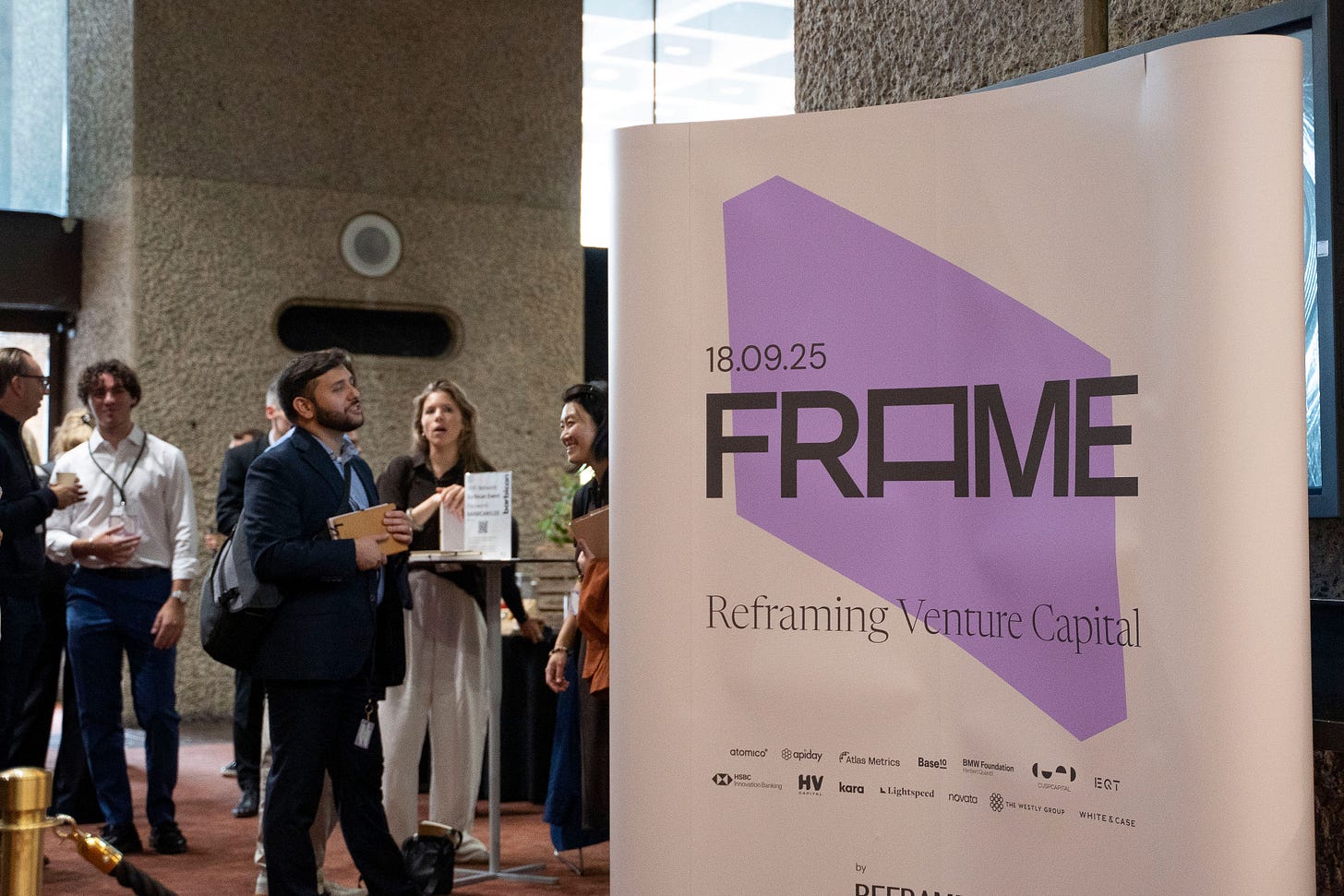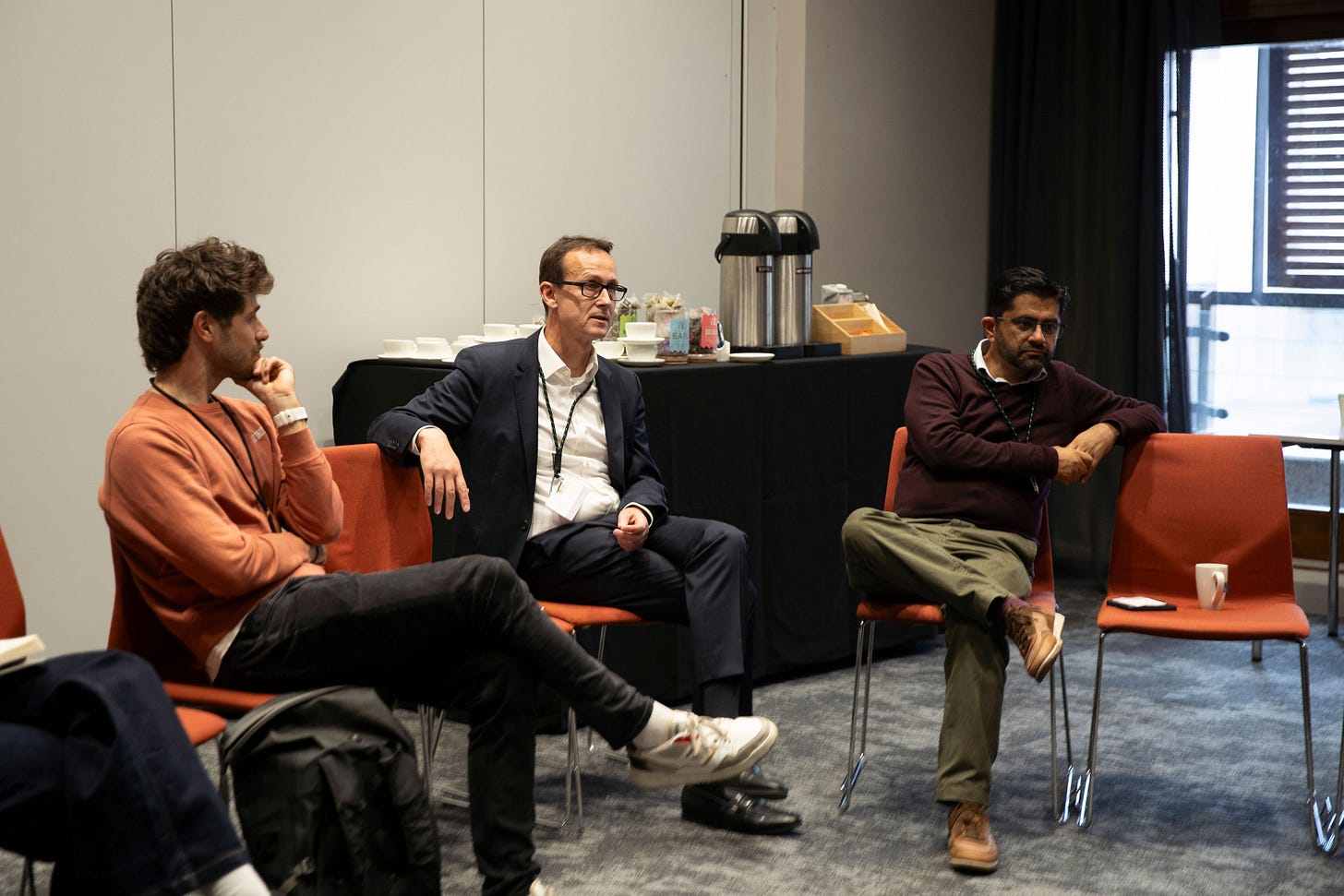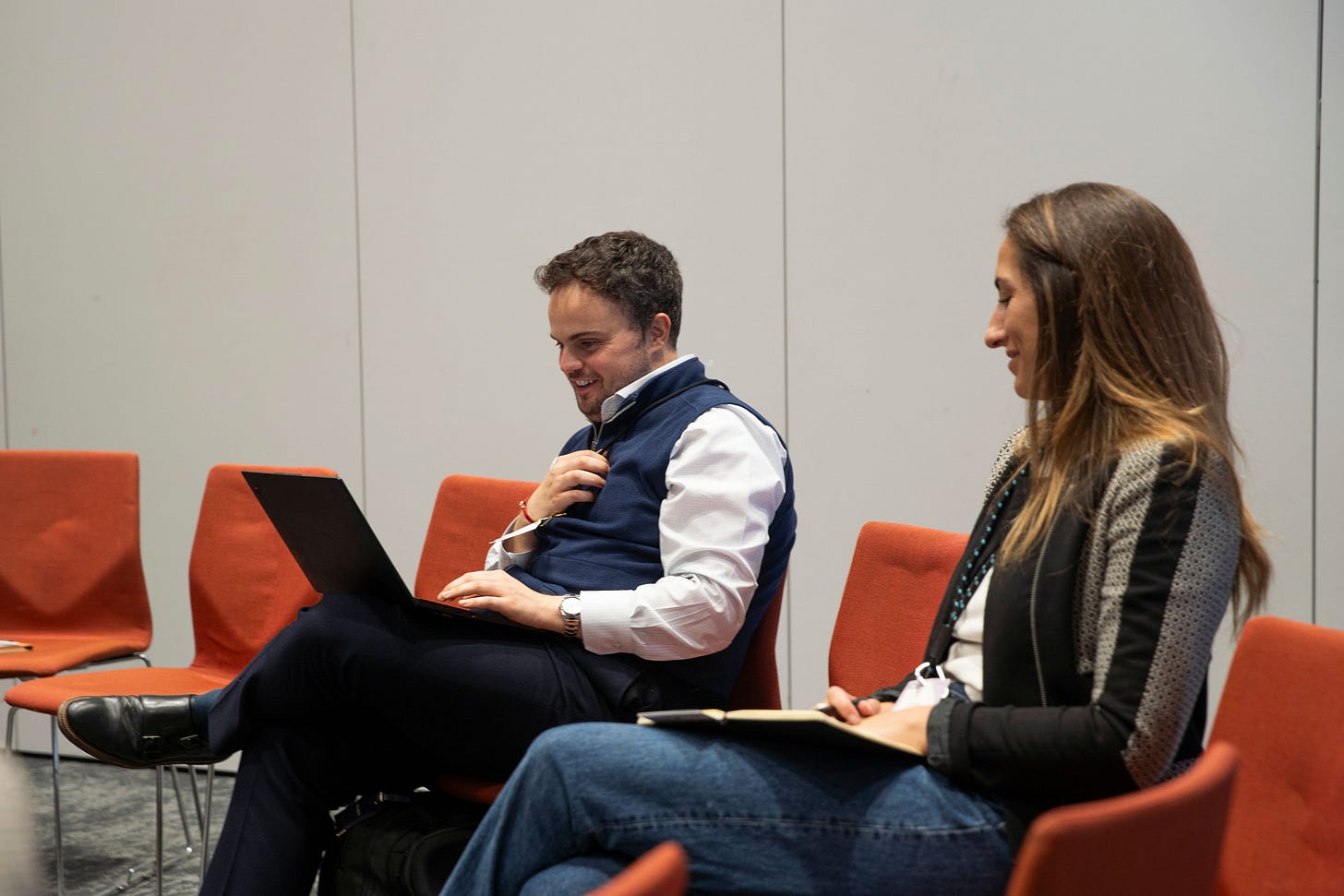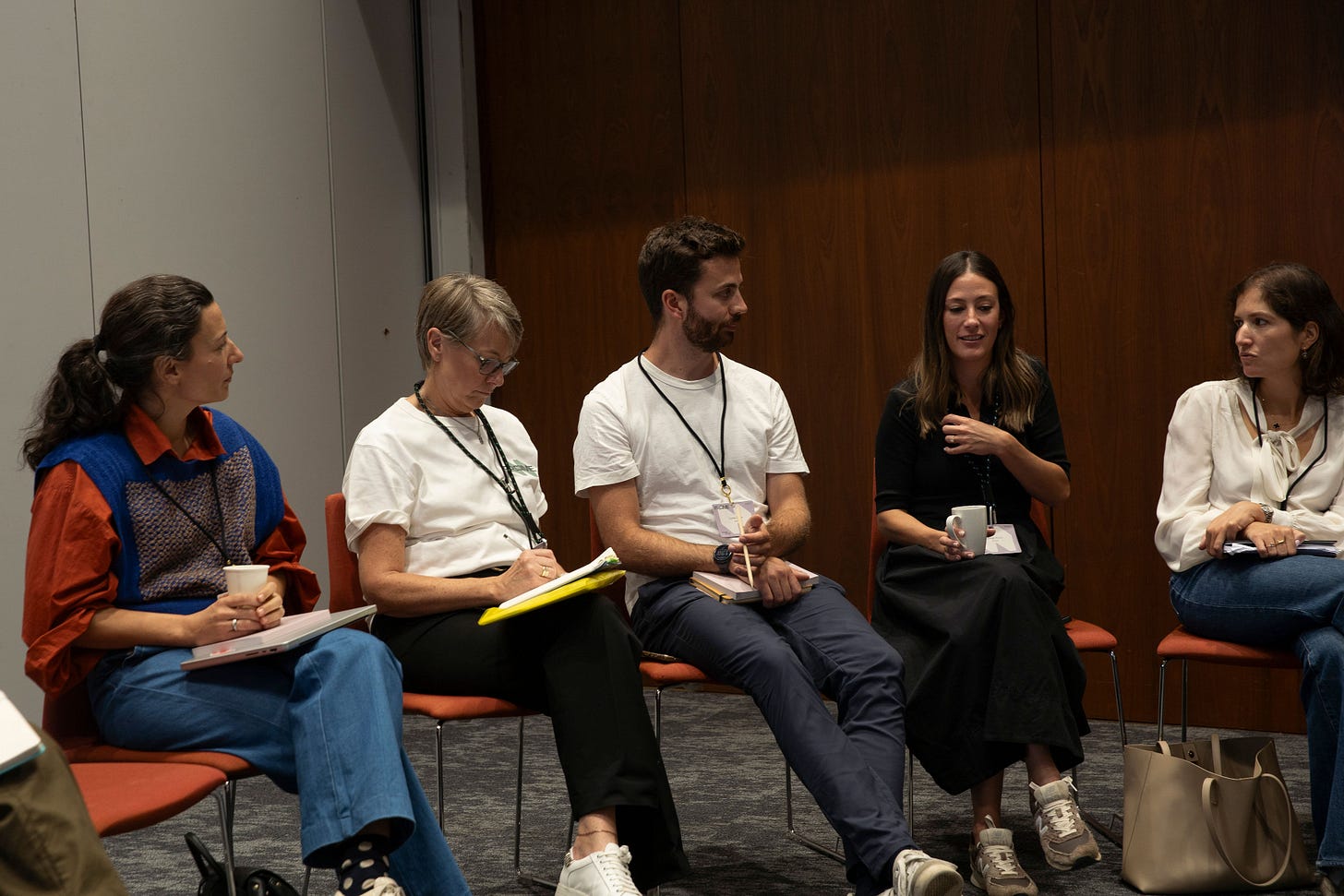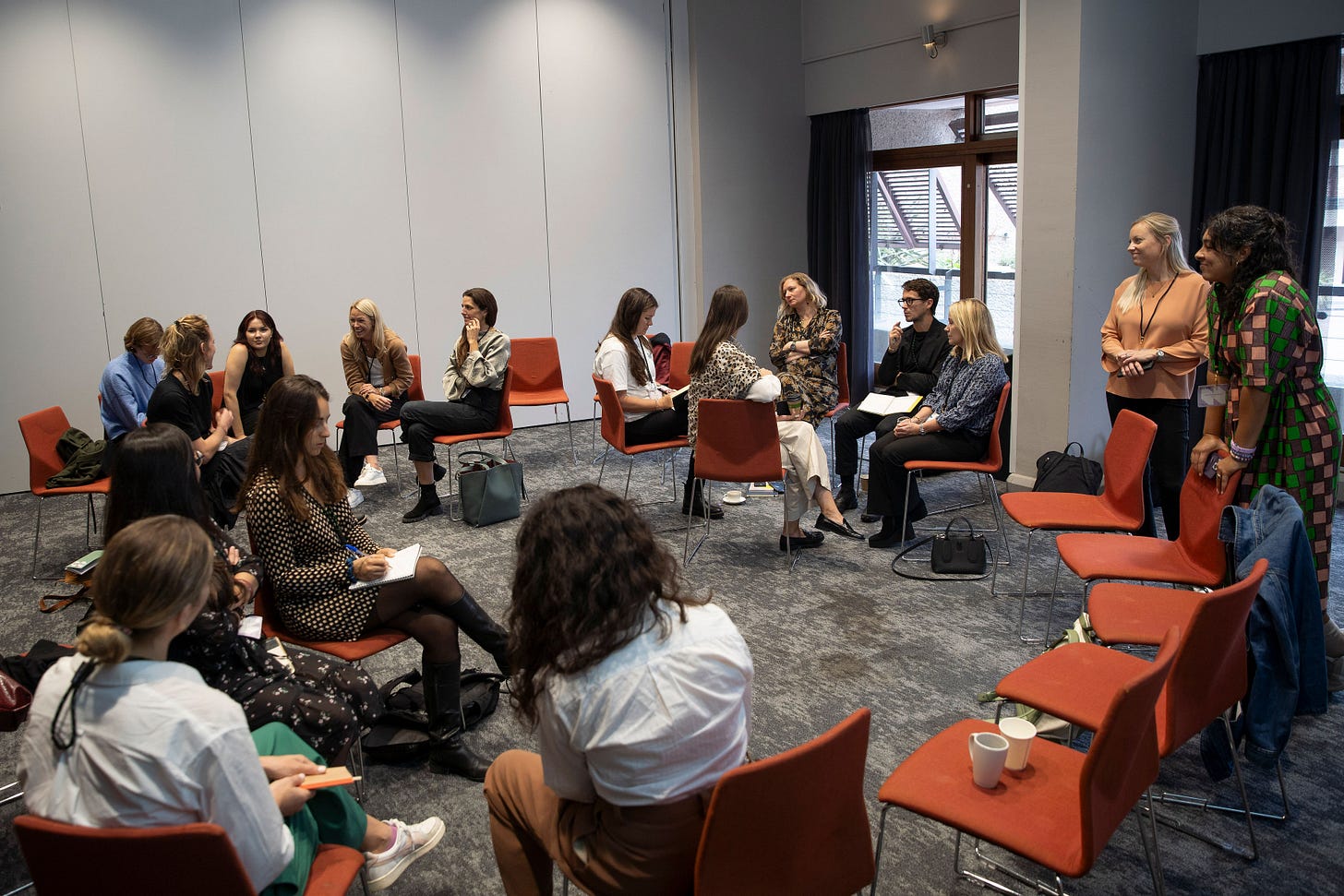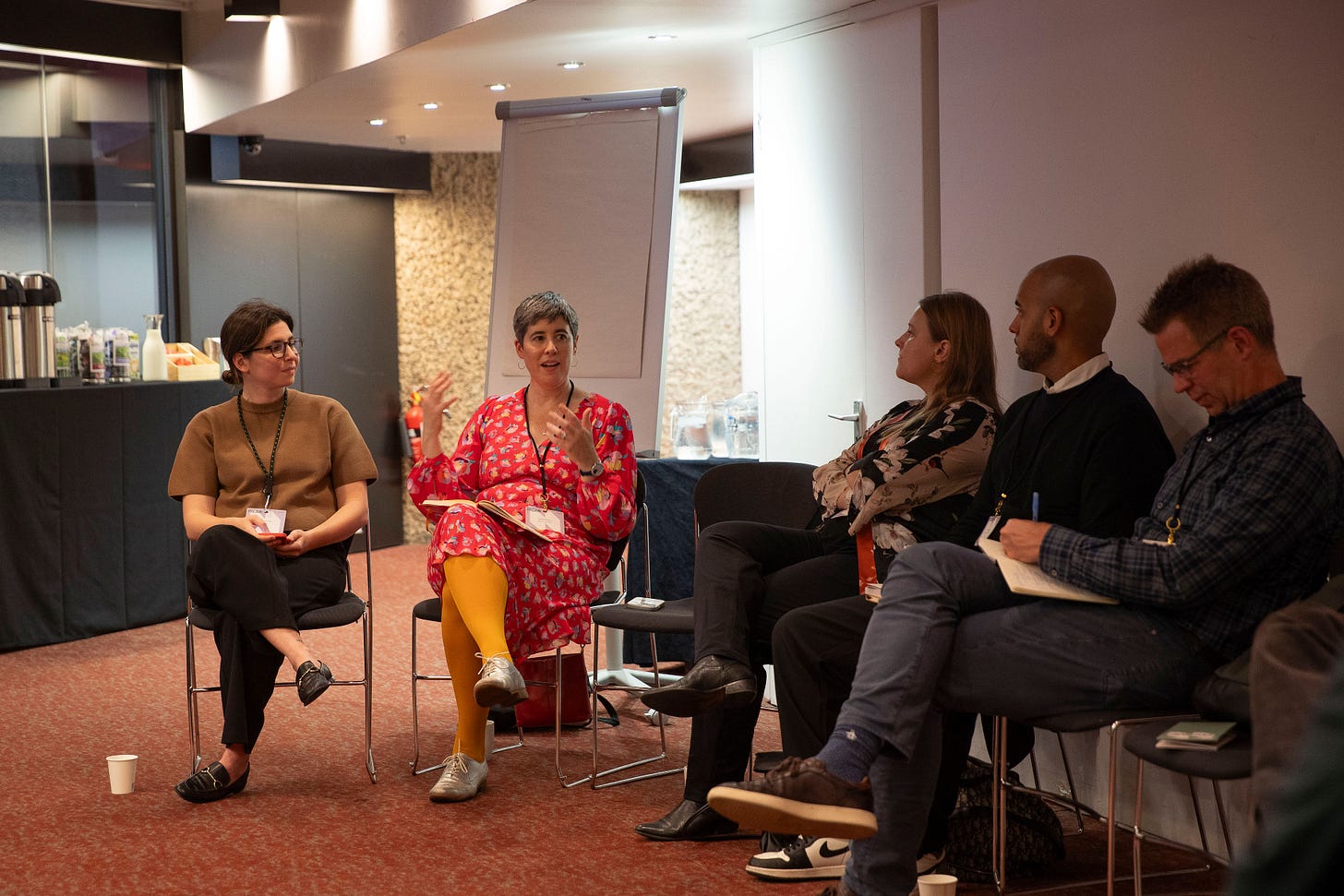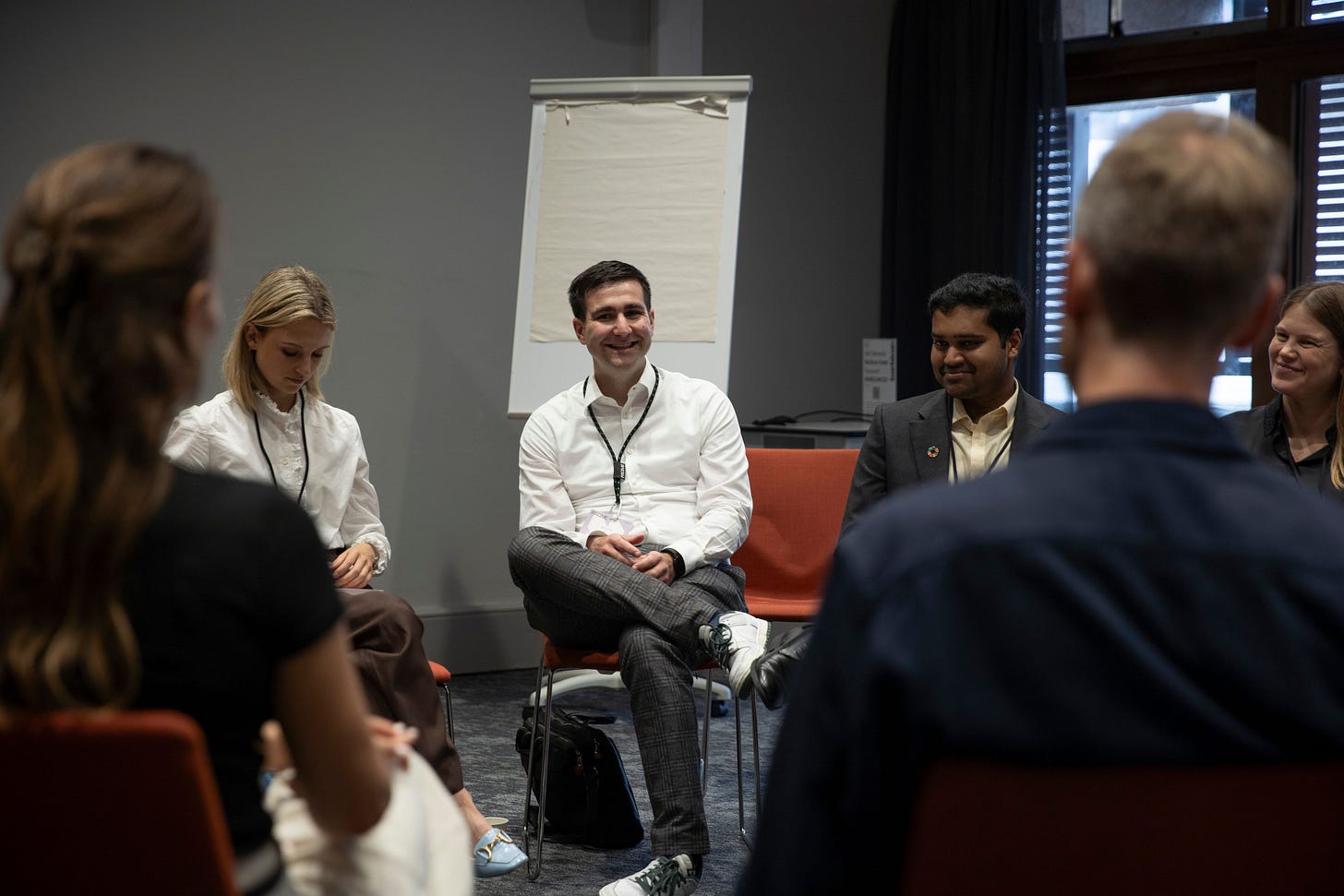Key Insights from FRAME 2025
October 2025
FRAME was - as last year - a deliberate departure from the traditional conference format. Instead, we designed it as two days of dynamic, thought-provoking conversation among our community of peers. Less front stage, more breakouts. Across ten safari breakfasts in the morning hosted by pairs of VCs/LPs across London across London, and ten afternoon breakout sessions facilitated again by VCs, LPs and NGOs. FRAME didn’t leave many ‘responsible investment’ stones unturned.
A number of recurring themes emerged across conversations.
Central to many was the evolving understanding of ESG: not as a compliance and reporting burden or branding exercise, but as a lens for identifying financially material risks and opportunities. Participants repeatedly emphasised the importance of promoting positive stories - presenting ESG as an opportunity that adds to the bottom line, rather than yet another restrictive regulatory checkbox.
Several LPs voiced frustration with mandated reporting requirements that prioritise immaterial data points, advocating instead for fund-level frameworks aligned to meaningful harmonisation. What emerged was a clear tension between regulatory compliance and strategic relevance, and a strong appetite to genuinely move the needle.
Participants discussed the need for practical, context-specific support and engagement on the portfolio company level, seeing ESG as a growth enabler. Benchmarking has started to become a surprisingly effective motivator. Note: You can find many examples of this in our new booklet ‘Inside the FRAME’!
There was a need for greater alignment across the entire venture ecosystem, from LPs to GPs to founders. Ultimately, ESG depends on successful governance and mission alignment, as well as trust which requires transparency and open communication.
Beyond these high level take-aways, we want to share very short snapshot summaries for (almost) all breakfasts and breakouts. Our hope is that we can start building on these observations over the coming months.
Breakfast 1: Scaling Europe’s Climate Tech Unicorns | Blume Equity & British Patient Capital
Insights:
Climate tech fundraising has declined, with fewer specialist funds and weaker 2025 data in line with general VC downturns
Growth-stage companies with proven market fit face a financing gap, with hardware and Capex-intensive businesses especially underfunded
Key takeaways:
Narratives around climate tech should be framed as value creation, rather than solely carbon reduction
Emphasise potential for long-term returns from patient capital
Unify investment narrative across ecosystem, emphasising resilience, opportunity and scale, while balancing fund differentiation to cover subsectors like food, transport and the built environment
Expansion of debt-equity collaboration models could be a way forward, with research suggesting that companies backed by CVCs have higher survival rates
Breakfast 2: Widening Access to Capital | Bethnal Green Ventures Capital & M&G
Insights:
Diversity of VC funds impact who and what gets funded, with investment committee representation trickling down to the representation in portfolio companies
Key takeaways:
Highlight lens of diversity related to universities, and encourage interns from schools other than Oxbridge (or Harvard, Stanford, Yale)
Track how power, and not merely people, show up: do women lead deals or are they just ‘sitting’ on ICs?
Breakfast 3: Making Human Rights Count in Venture Capital
| Atomico, AP6 & Business & Human Rights Resource Centre
Insights:
Human Rights is an under-served area of due diligence. Should it have its own DD process, or should it be a smaller subset of existing ESG questionnaires?
Gender rights are increasingly considered, but rights related to land use and cultural heritage are still overlooked
Human Rights needs to be considered as financially material for both investors and portfolio companies
Key takeaways:
Develop separate Human Rights due diligence processes
Think globally: Don’t assume counter parties, partners or actors in value chains have equivalent HR policies and practices, especially when stepping outside democratic states
Think about alternative uses or ‘version 2’ applications for assessing HR risks
Investment teams should ask themselves: how could this technology be used in other contexts, what risks are raised and what are the guardrails that can be used to safeguard against them?
Breakfast 4: Beyond Taboo: Reconciling Defence, ESG and Investor Mandates
| Albion VC & National Security Strategic Investment Fund
Insights:
Taxonomy is a key challenge for most investors: what is defence tech? What is the full scope of technologies/use cases that fall under this?
With the market growing fast, many standards and frameworks are still emerging for the most disruptive types of defence technologies (i.e. quantum), which means individual companies have to determine how to manage these technologies
Defence deals require significantly longer diligence periods
Key takeaways:
Develop standardised taxonomies of defence technologies
LPs should replace exclusions lists, which only cover tech that is illegal or highly controversial, with ‘attention lists’ which flag technologies eligible for investment but require deeper due diligence, and a hands-on approach
Breakfast 5: ESG for Emerging Managers
| British Business Bank & Zinc
Insights:
ESG Is about embedded practices, not just optics; emerging managers must integrate ESG into investment ethos, rather than simply present policies or slide decks
Institutional LPs bring rigorous ESG standards but also clearer expectations and usable frameworks
Key takeaways:
Conduct due diligence on your LPs, just as they conduct due diligence on you: prioritise those with clear, supportive frameworks and a commitment to partnership, while avoiding ‘tire-kickers’ whose demands may outweigh their value-add
Breakfast 6: Governance in Emerging Markets Venture Capital
| British International Investment & FMO
Insights:
Governance should be appropriate to a fund or startup’s stage, capital level, and context
Governance underpins trust between investors and founders. Transparency — especially around financials — is essential, and once trust is broken, it is difficult to repair
Key takeaways:
Rather than applying best practices from day one, companies should focus on instilling a governance culture early and adapting structures (like boards, policies, and reporting) as they grow
Pool expertise, share resources and platforms to support startups in identifying governance needs and strengthening board capabilities
Succession planning should be approached early and seen beyond just CEO replacement — covering various scenarios like incapacity or sanctions
Breakfast 7: Scaling Under Scrutiny
| Lightspeed & Sofina
Insights:
Embedding ESG principles lightly and strategically from the seed/Series A stage is far more effective than retrofitting at later stages
Without divestment levers like those in public markets, private investors must focus on proactive engagement and smarter incentive structures to drive ESG performance
Key takeaways:
Use ESG as a competitive differentiator by sharing benchmarking data, sector insights, and ROI case studies
This allows founders and GPs to see ESG as a business asset, not a compliance drag
LPs and GPs must lead by example, from travel policies to AI procurement, to maintain credibility and inspire founder engagement
Breakfast 8: Responsible AI in Practice: Moving From Theory to Practice
| EQT & Stepstone
Insights:
Responsible AI must be grounded in business context, as abstract frameworks don’t resonate with founders
AI’s probabilistic nature challenges traditional governance, with rigid guardrails often falling short
Responsible AI demands specialised expertise and governance models, and thus sits outside of traditional ESG
Key takeaways:
Support founders with practical tools and context-aware guidance, not just compliance checklists or top-down frameworks
Invest in internal capacity-building — teams need ongoing training to keep up with evolving RAI risks, technologies, and governance approaches
Breakfast 9: Climate Risk is a Business Risk
| 2150 & Snowball
Insights:
Tensions persist between LPs and GPs, with LPs pushing for deeper, more dynamic climate risk integration while GPs often lack the resources or internal expertise to act decisively
Climate risk is a financial risk. Rising insurance costs, impaired assets, and operational disruptions are already affecting business performance
Key takeaways:
Use climate risk assessments to inform strategic decisions and identify upsides, not just to meet disclosure requirements
Combine cohort-based learning with one-on-one briefings, and prioritise climate education aligned to company maturity, sector, and material risks
Co-create shared resources, like simplified “idiot’s guides” to TCFD and toolkits for physical risk monitoring, to reduce burden on portfolio companies and improve adoption across the ecosystem
Breakfast 10: Financial Impact of ESG Integration
| Antler and UCIM
Insights:
Early engagement on initiatives that have a clear alignment with financial upside or risk management can help normalise ESG within VC-backed companies
The rise of AI is placing greater focus on cyber security and data governance, as material issues within portfolio companies
Key takeaways:
Use case studies and concrete ROI examples (e.g., cost of capital discounts) to more effectively resonate with sceptics
Use founder intent as a filter in early-stage investing; keep measurement light but purposeful
Breakout 1: Is ESG Regulation Helpful or Harmful? | Passion Capital & Travers Smith
Insights:
Mixed perceptions of ESG regulation remain, with some GPs and founders seeing it as a helpful nudge, while others see it as burdensome, unclear in purpose, and misaligned with venture-stage realities
There’s a disconnect between regulatory ESG reporting requirements and what LPs actually find useful
LPs prefer material, decision-relevant data over box-ticking exercises
Key takeaways:
Tie ESG reporting to funding milestones
Engage with policymakers or industry groups to push for incentive-based ESG regulations (e.g. tax credits, sustainability certifications) that better suit early-stage investing and promote genuine impact
Breakout 2: Governance at Growth | General Atlantic & Revaia
Insights:
At growth stage, strong governance enables resilience, sustainability, and long-term value
Strong relationships and founder trust are equally critical for effective oversight
Key takeaways:
Aim for small, diverse boards with independent members to balance agility and strategic challenge
Use in-camera sessions to surface tensions and align stakeholders without undermining trust
Breakout 3: ESG Evolved: What Works, What Doesn’t, and What’s Next for VC?
| HV Capital & daphni
Insights:
VCs saw stronger ESG buy-in when they positioned themselves as helpful partners (”we’re not the police”)
Time and capacity are major constraints, as ESG professionals face limited bandwidth across large portfolios, requiring strict prioritisation; investors and startups alike often claim “no time” for ESG work
Key takeaways:
Replace generic webinars with need-based, collaborative ESG initiatives to improve engagement from portfolio companies
Benchmarking tools (e.g. Apiday) and AI platforms (e.g. Perplexity) can streamline ESG DD and reporting tasks while boosting credibility with data
Breakout 4: What Can An ESG Believer Learn From the ESG Naysayers?
| Base10 & Kinnevik
Insights:
Pushback stems from perceived loss of control, confusion over what ESG actually means, and the disconnect between VC’s short-term focus and ESG’s long-term nature
Acronyms and “movement” framing alienates skeptics
Key takeaways:
Swap jargon for terminology that directly relates to business goals and risk management like “resilience,” “robustness,” and “future-proofing” can reduce resistance
Acknowledge there are tradeoffs, and organise peer discussions that can help ESG practitioners share challenges, recalibrate strategies and avoid burnout
Breakout 5: Boss Tech: Managing Workers with Technology
| Resolution Foundation, ShareAction & OpenMic
Insights:
Workplace tech, especially monitoring tools, can erode trust or enhance job quality, depending on how it’s designed and governed
Excluding workers from design processes leads to harmful outcomes; their input is critical for risk assessments, explainability, and rights protection
Key takeaways:
Involve workers in the development of workplace tech to ensure it supports, rather than undermines, their roles and rights
Embed impact assessments from the beginning across all company layers, focussing on this as good business practice, not just ESG compliance
Breakout 6: From Stick to Carrot: ESG Beyond Compliance
| Elaia, Blueyard & Eight Roads
Insights:
Funds that embed ESG through internal conviction and open conversations rather than regulation see deeper engagement and long-term impact
Internally embedded values rather than formal policies are drivers for lasting change
Key takeaways:
Embed ESG into investment committee workflows, due diligence, bonus schemes and team KPIs
Standardised questionnaires, collaborative workshops, and open-source resources can streamline ESG for small teams and improve founder buy-in
Breakout 7: How To Do Impact Well Around Impact Measurement and Management (IMM)
| Astanor, Pitango & Better Society Capital
Insights:
Founders often conflate ESG with impact, leading to weak or superficial practices
ESG and impact gain traction when tied to commercial benefits like brand differentiation, investor trust, or reduced risk
Key takeaways:
Frame ESG and impact in business terms (e.g. cost savings, market positioning)
Build internal capacity across teams (HR, operations, etc.) to understand and speak the language of impact
Breakout 8: Distributing ESG Responsibility: Investors Pulling Their ESG-Weight
| Cusp Capital & Form Ventures
Insights:
ESG integration works best when the entire investment ecosystem, and especially lead investors, is aligned
VCs, who are busy across many investments, must rely on good governance processes and on the founder’s attitude to manage ESG opportunities
Key takeaways:
Embed ESG conversations during initial due diligence, to avoid last-minute surprises
LPs should ask GPs targeted questions about ESG strategy, concrete examples of ESG-driven deal decisions
Look for answers specific to the funding stage and investment thesis, and articulation of values and clear objectives
Breakout 9: Do VCs need Policy Teams?
| Project Liberty Institute, European Innovation Council & Atomico
Insights:
Policy engagement in VC is evolving from traditional lobbying to strategic ecosystem design, requiring investors to act as co-architects shaping innovation frameworks
Europe’s fragmented regulatory environment demands sustained, trust-based policy stewardship and the building of institutional bridges
Takeaways:
Funds with sufficient scale and thematic focus should build dedicated policy capacity to enhance resilience and strengthen founder trust
Smaller funds should leverage shared infrastructure or network platforms to participate in policy engagement
European investors must prioritise continuous, multi-jurisdictional collaboration to build a robust policy–capital–innovation stack

